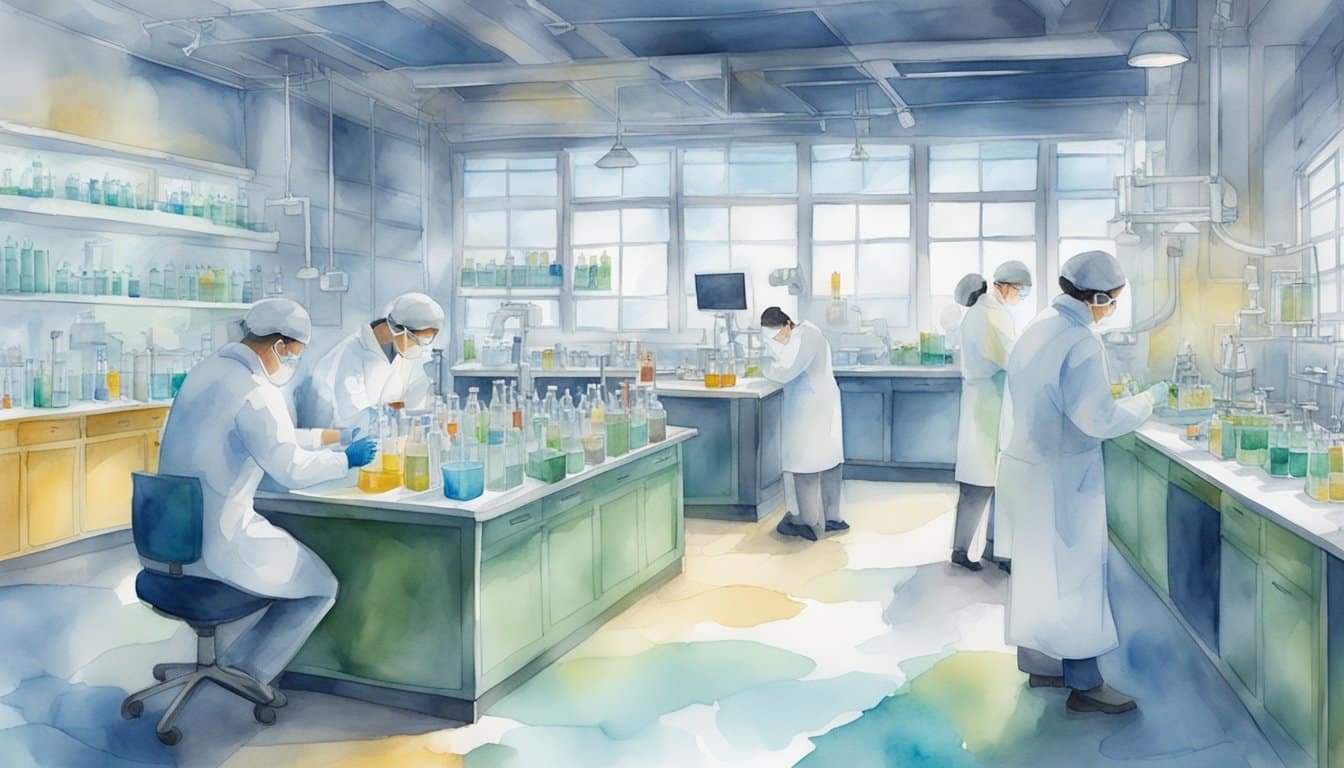Microplastics and Human Health
Microplastics are increasingly found in various environments, ultimately leading to potential human exposure. This prevalence raises concerns regarding their impact on human health, given the tiny particles can traverse through different biological barriers.
Pathways of Exposure
Humans come into contact with microplastics mainly through ingestion, inhalation, and to a lesser extent, through skin contact. Microplastics have been detected in food, especially seafood, and are also present in airborne particles, increasing the risk of exposure via inhalation. Personal care products contribute to exposure through both direct contact with the skin and through the lungs when microplastics become airborne. These tiny particles can even cross into the placenta, indicating the potential for exposure begins as early as in utero.
Health Risks and Physical Effects
Once microplastics enter the body, they can cause a cascade of physical effects. Nanoplastics and smaller microplastics may pass through cellular membranes and enter human cells, potentially leading to oxidative stress, inflammation, and damage. The immune system may be affected, and there have been suggestions linking microplastics to respiratory issues when inhaled into human lung tissue. The lungs and blood are particularly susceptible to damage from these particles. The long-term health impacts, including the potential for triggering diseases due to toxicity from the chemical composition of plastics and their additives, are still being researched. Some studies have observed altered reproductive systems and allergic reactions in association with high levels of exposure.
Detection and Analysis in Human Samples
Detecting microplastics in human samples is a complex process that requires sophisticated methods. Research has identified microplastics in human feces, blood samples, and even within lung and placenta tissues. These findings confirm that microplastics can be excreted but also accumulate in organs. The contamination concentrations and their health impact are being studied through ecotoxicology, a field that has seen increased interest and funding. The plastic production industry’s role in this contamination, particularly with the prevalence of polyethylene in consumer products, underscores the urgency for more comprehensive studies on human exposure and health effects.
Sources and Global Dispersion of Microplastics

Diving into the world of microplastics, it’s crucial to understand where these tiny invaders come from and how they journey across the globe. Traces of microplastics have been found from the peaks of Mount Everest to the depths of the Mariana Trench, illustrating their extensive reach.
Microplastics in Food and Beverage
People might be surprised to learn that microplastics have been detected in products ranging from seafood to salt. Studies have even found these minuscule plastics in human placentas, raising concerns about potential impacts on unborn babies. Research suggests that when people ingest microplastics through food and drink, these tiny particles could end up in various tissues and organs.
Environmental Proliferation
Microplastics don’t respect borders; air and waterways serve as highways, carrying these plastics throughout ecosystems. Weather patterns contribute to the dispersion of airborne microscopic plastics, even depositing particles from clothing fibers into remote areas, far from human populations. Meanwhile, oceans act as a major collector, with microplastics entangling marine life and disrupting delicate ecological balances.
Consumer Products and Industrial Sources
Everyday items are a surprising yet prominent source of microplastic pollution. From personal care products containing microbeads to packaging materials like polyethylene and polystyrene, these polymers break down and release microplastics into the environment. Industries contribute significantly, as plastic waste from production processes finds its way into soil and water, impacting plants, animals, and even the air we breathe.
Mitigation Strategies and Regulatory Perspectives

The proliferation of microplastics presents critical challenges to the environment and human health, necessitating comprehensive strategies encompassing public education, regulatory action, and advancing research to forge an effective response to the plastic pollution dilemma.
Public Awareness and Education
Informing the broader public about the insidious nature of microplastics in our food, water, and even the air we breathe is the vanguard of combating plastic pollution. Initiatives like community-led beach cleanups and educational programs in schools can empower individuals to reduce plastic consumption. Raising awareness about how plastics break down and the potential dangers they pose to our health, particularly to the reproductive systems and other vital organs, drives home the importance of personal and collective action.
Policy and Regulation
Governments across the globe are stepping up, formulating policies aimed at reducing plastic production and enhancing plastic waste management. Legislative measures such as banning single-use plastics, imposing fees for plastic bag usage, and setting targets for plastic reduction aim to curb plastic consumption. Regulation at industry levels is also paramount, pushing for responsible manufacturing practices and obligating producers to manage the lifecycle of their products to safeguard ecosystems and, in particular, marine organisms like mussels that are adversely affected by microplastics.
Research and Development
The fight against plastic pollution is being bolstered by ongoing research and development efforts. These initiatives, often supported by anonymous donors and government funding, aim to better understand the health impacts of microplastics and develop mitigation technologies. By investing in innovative materials that could potentially replace plastics and exploring methods to break down existing plastics without releasing harmful chemicals, scientists and industry players are collaborating to protect both human health and the environment international.

